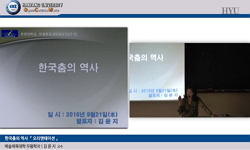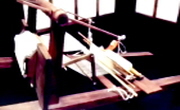We have a short history of the law of unfair competition. However, the western world has a long history of the unfair competition. It began when the commercial trade happens. The study of the history of the unfair competition will bring a hint of the ...
http://chineseinput.net/에서 pinyin(병음)방식으로 중국어를 변환할 수 있습니다.
변환된 중국어를 복사하여 사용하시면 됩니다.
- 中文 을 입력하시려면 zhongwen을 입력하시고 space를누르시면됩니다.
- 北京 을 입력하시려면 beijing을 입력하시고 space를 누르시면 됩니다.

불공정경쟁법의 기원과 법원리의 형성 = The Origin and Formation of Legal Principle of the Law of Unfair Competition
한글로보기https://www.riss.kr/link?id=A106182995
-
저자
나종갑 (연세대학교)

- 발행기관
- 학술지명
- 권호사항
-
발행연도
2019
-
작성언어
Korean
-
주제어
불공정경쟁 ; 부정경쟁 ; 사칭모용행위 ; 프랑스 ; 독일 ; 미국 ; 영국 ; 한국 ; 역사 ; 상표법 ; 길드 ; 신용 ; unfair competition ; palming off ; passing off ; Frence ; Germany ; England ; America ; the U.S. history ; trade mark ; guild ; goodwill
-
등재정보
KCI등재
-
자료형태
학술저널
- 발행기관 URL
-
수록면
1-41(41쪽)
-
KCI 피인용횟수
0
- 제공처
- 소장기관
-
0
상세조회 -
0
다운로드
부가정보
다국어 초록 (Multilingual Abstract)
We have a short history of the law of unfair competition. However, the western world has a long history of the unfair competition. It began when the commercial trade happens. The study of the history of the unfair competition will bring a hint of the study of the Korean unfair competition. The history of the law of unfair competition consists of two prongs at large. The one is the civil law system including the French system and the German system and the other is the common law system. After French revolution in 1789, France has developed the law of unfair competition based on political liberalism and various unfair competition case law by the court’s decisions in which the court interprets the torts of civil law and develops the theory of unfair competition. In Germany, Formalism dominated late nineteen century, therefore its concept, nothing provide and nothing prohibited, impeded the development of the law of unfair competition because no explicit provision existed for unfair competition. Later, under influence of French unfair competition concept, Germany developed the law of unfair competition. English law of unfair competition has been developed in the penumbra of the legal concept of palming off. The U.S. based on common law unfair competition law has a narrow view of the law of unfair competition until 1910s when in INS v. AP the U.S. Supreme Court interpreted the misappropriation case as the law of unfair competition. However, the Supreme Court’s holding of INS v. AP was not universally accepted in the U.S. courts. In 1964, the Uniform Deceptive Trade Practices Act of 1964, as amended 1966, was adapted to uniformize the law of unfair competition of each states. The unfair competition action for deceptive trade practices or ‘‘palming off’’ developed from the common law action for unfair competition, a modernist term of common law torts. The unfair competition law of Korea adapted after the independence from Japan is very similar to the U.S. ‘s Uniform Deceptive Trade Practices Act of 1964, as amended 1966 which dealt with misleading identification of business and goods and false and deceptive advertising. The study of the U.S. system of the law of unfair competition will help to interpretate the Korean Law of unfair competition
국문 초록 (Abstract)
우리나라의 불공정경쟁법의 역사는 짧다. 그러나 서양에서 불공정경쟁법의 형성 역 사는 오래되었다. 상거래가 존재하는 때부터 불공정경쟁의 역사가 존재하였다고 할 수 있다. 불공정경쟁...
우리나라의 불공정경쟁법의 역사는 짧다. 그러나 서양에서 불공정경쟁법의 형성 역 사는 오래되었다. 상거래가 존재하는 때부터 불공정경쟁의 역사가 존재하였다고 할 수 있다. 불공정경쟁법의 형성역사에 대한 고찰은 우리 부정경쟁방지법의 올바른 이 해에 도움이 된다. 근대적인 불공정경쟁법은 프랑스를 중심으로 한 대륙법계와 palming off를 중심으 로 한 영미법계가 존재한다. 대륙법계는 프랑스계와 독일법계가 나누어진다. 프랑스 는 1789년 프랑스 혁명이후에 자유주의 사상을 바탕으로 민법의 불법행위를 바탕으로 법원의 판결에 의하여 다양한 불공정경쟁행위를 형성하였고, 그것을 바탕으로 불 공정경쟁법을 발전시켰다. 독일은 법실증주의로도 알려진 형식주의에 따라 상표법에 규정되지 않은 행위는 규제되지 않는다는 사상에 따라 명시적 법규정이 없었던 불공정경쟁법이 상대적으로 늦게 발전하였으나, 프랑스의 영향을 받아 부정경쟁방지법을 제정하여 독자적으로 발전시켰다. 영국은 사칭모용행위라고 알려진 palming off를 불공정경쟁행위로 인정 하여 불공정경쟁법의 영역을 확장하지 않았다. 영국의 영향을 받은 미국도 1910년대 이전까지 불공정경쟁법은 palming off에 머물러 있었다. INS v. AP 사건에서 부정취득 사용을 불공정경쟁행위로 인정하였지만, 부정취득사용도 불공정경쟁행위로서 보편적 으로 수용된 것은 아니었다. 1962년 미국은 각 주의 불공정경쟁법을 통일하기 위하여 통일불공정경쟁법을 마련한다. 통일불공정경쟁법상 불공정경쟁행위는 출처에 대한 오인혼동을 가져오는 부정경쟁행위와 기망적 허위광고에 의한 부정경쟁행위로 나누 어 볼 수 있는데, 해방후 제정되어 시행된 우리 부정경쟁방지법은 미국의 통일불공정 경쟁법과 그 내용이 유사하다. 따라서 미국 불공정경쟁법의 연구는 우리법해석에 도 움이 될 것이다.
참고문헌 (Reference)
1 Volker Emmerich, "부정경쟁법" 삼지원 1996
2 나종갑, "부정경쟁방지법의 본질론과 무임승차 행위의 한계 - 한 우산속 바람꽃, 너도바람꽃, 나도바람꽃 -" 한국지식재산학회 (53) : 60-, 2017
3 정호열, "부정경쟁방지법론" 삼지원 1993
4 최병규, "독일상표법의 연혁/지리적표시보호 및 유럽공동체상표”, 지적소유권법연구" 3 : 1999
5 網野誠, "商標" 有斐閣 12-, 2001
6 이상정, "不正競爭禁止法理의 發展" 1 : 1989
7 Anselm Kamperman Sanders, "Unfair Competition Law" 1997
8 Oliver R. Mitchell, "Unfair Competition" 10 : 275-, 1896
9 Benjamin G. Paster, "Trademarks-Their Early History: Part I" 59 : 551-, 1969
10 Magdalen Beyerling, "Trademark- Their Origin and Development" 32 : 256-, 1937
1 Volker Emmerich, "부정경쟁법" 삼지원 1996
2 나종갑, "부정경쟁방지법의 본질론과 무임승차 행위의 한계 - 한 우산속 바람꽃, 너도바람꽃, 나도바람꽃 -" 한국지식재산학회 (53) : 60-, 2017
3 정호열, "부정경쟁방지법론" 삼지원 1993
4 최병규, "독일상표법의 연혁/지리적표시보호 및 유럽공동체상표”, 지적소유권법연구" 3 : 1999
5 網野誠, "商標" 有斐閣 12-, 2001
6 이상정, "不正競爭禁止法理의 發展" 1 : 1989
7 Anselm Kamperman Sanders, "Unfair Competition Law" 1997
8 Oliver R. Mitchell, "Unfair Competition" 10 : 275-, 1896
9 Benjamin G. Paster, "Trademarks-Their Early History: Part I" 59 : 551-, 1969
10 Magdalen Beyerling, "Trademark- Their Origin and Development" 32 : 256-, 1937
11 Madalina Irena Voiculescu, "The Relation between Clientele and Venue" 2015 : 269-, 2015
12 Frank I. Schechter, "The Rational Basis of Trademark Protection" 40 : 813-, 1927
13 Eugen Ulmer, "The Law of Unfair Competition and the Common Market" 53 : 625-, 1963
14 Walter J. Derenberg, "The Influence of the French Code Civil on the Modern Law of Unfair Competition" 4 : 1-, 1955
15 Abraham S. Greenberg, "The Ancient Lineage of Trade-Marks" 33 : 876-, 1951
16 Edward Sidney Rogers, "Some Historical Matter concerning Trade-Marks" 9 : 29-, 1910
17 Kay-Uwe Jonas, "Revision of the German Grademark Law" 94 : 605-, 1994
18 Ronan Deazley, "Privilege and Property: Essays on the History of Copyright" 2010
19 Mary LaFrance, "Passing Off and Unfair Competition: Conflict and Convergence in Competition Law" 2011 : 1413-, 2011
20 Gerald Ruston, "On the Origin of Trademarks" 45 : 127-, 1955
21 Grafton Dulany Cushing, "On Certain Cases Analogous to Trade-Marks" 4 : 321-, 1891
22 J. F. Iselin, "New German Law of Unfair Competition" 13 : 156-, 1897
23 Edward Sidney Rogers, "Law Book Exchange" LTD 2002
24 Christopher May, "History of Technology Vol 24"
25 Franklin D. Jones, "Historical Development of the Law of Business Competition" 35 : 905-, 1926
26 W. C. Fairweather, "Early Scots Law on Trade-Marks" 31 : 45-, 1941
27 Joanna Kostylo, "Commentary on the Venetian Senate’s first Decree on Press Affairs" 1517
28 Bernard Schwartz, "Code Napoleon and the Common-Law World" 1956
29 John Frederic Clerk, "Canadian Edition of the Law of Torts" 2018
30 Ronan Deazley, "Borghi, A Venetian Experiment on Perpetual Copyright in Privilege and Property" 2010
31 Friedrich-Karl Beier, "Basic Features of Anglo-American, French and German Trademark Law" 285-, 1975
32 Lipson, "An Introduction to the Economic History of England" 1915
33 Colegrove, Helen Mae, "A Glossary of Terms Passed upon in American Trade Mark Cases" 1896
동일학술지(권/호) 다른 논문
-
데이터와 사법상의 권리, 그리고 데이터 소유권(Data Ownership
- 한국정보법학회
- 최경진
- 2019
- KCI등재
-
디지털 환경 변화에 따른 사복제보상 제도 도입의 타당성 연구
- 한국정보법학회
- 김광식
- 2019
- KCI등재
-
내 DNA 정보는 내 마음대로 사용해도 되는가- DNA 정보의 특수성과 자기정보 통제권의 제한 -
- 한국정보법학회
- 이원복
- 2019
- KCI등재
-
「공공데이터의 이용과 통계 학술연구 목의 데이터 처리」에 한 연구
- 한국정보법학회
- 전응준
- 2019
- KCI등재
분석정보
인용정보 인용지수 설명보기
학술지 이력
| 연월일 | 이력구분 | 이력상세 | 등재구분 |
|---|---|---|---|
| 2026 | 평가예정 | 재인증평가 신청대상 (재인증) | |
| 2020-01-01 | 평가 | 등재학술지 유지 (재인증) |  |
| 2017-01-01 | 평가 | 등재학술지 유지 (계속평가) |  |
| 2013-01-01 | 평가 | 등재 1차 FAIL (등재유지) |  |
| 2010-01-01 | 평가 | 등재학술지 선정 (등재후보2차) |  |
| 2009-01-01 | 평가 | 등재후보 1차 PASS (등재후보1차) |  |
| 2007-01-01 | 평가 | 등재후보학술지 선정 (신규평가) |  |
학술지 인용정보
| 기준연도 | WOS-KCI 통합IF(2년) | KCIF(2년) | KCIF(3년) |
|---|---|---|---|
| 2016 | 0.95 | 0.95 | 0.78 |
| KCIF(4년) | KCIF(5년) | 중심성지수(3년) | 즉시성지수 |
| 0.72 | 0.79 | 0.871 | 0.38 |




 KCI
KCI







